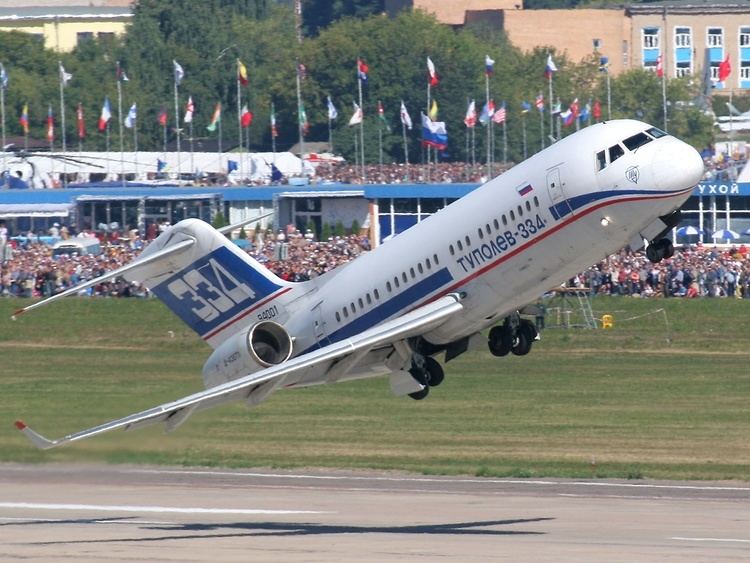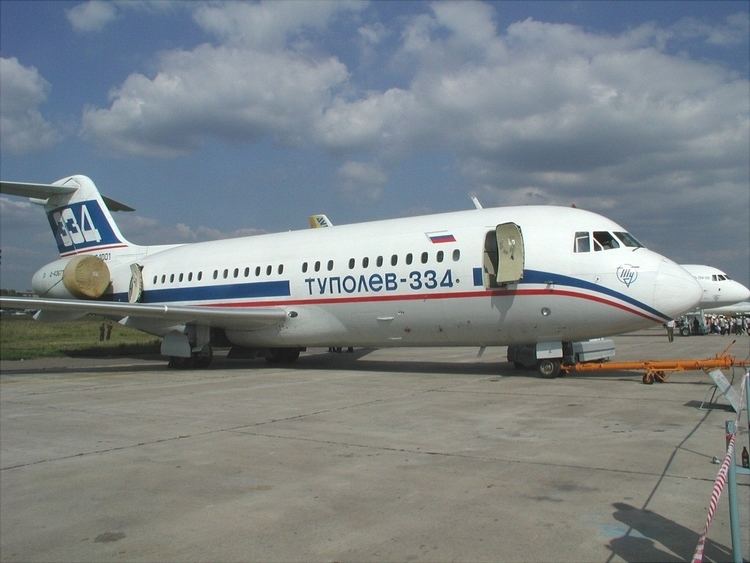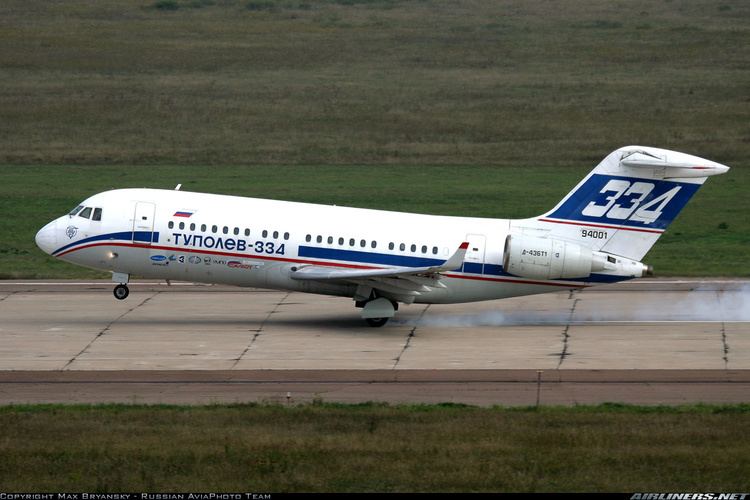Top speed 865 km/h Length 31 m | Wingspan 30 m First flight February 8, 1999 | |
 | ||
Manufacturers United Aircraft Corporation, Tupolev | ||
The Tupolev Tu-334 was a Russian short to medium range airliner project that was developed to replace the ageing Tu-134s and Yak-42s in service around the world. The airframe was based on a shortened Tu-204 fuselage and a scaled-down version of that aircraft's wing. Unlike the Tu-204, however, the Tu-334 has a T-tail and engines mounted on the sides of the rear fuselage instead of under the wings. With the rationalisation of the Russian aircraft companies in 2009 to form United Aircraft Corporation it was decided not to continue with the programme.
Contents
- Tupolev tu 334 100d commercial passenger jet specs features
- Development
- Variants
- Specifications Tu 334 100
- References

Tupolev tu 334 100d commercial passenger jet specs features
Development

Work commenced on the Tu-334 in the early 1990s, but proceeded slowly due to funding problems arising from the break-up of the Soviet Union. A prototype was displayed in 1995, but this was little more than a mock-up with few systems installed. A functional aircraft first flew on February 8, 1999, and later that year, agreements were put in place for MiG to undertake part of the production of the airliner. A Russian type certificate was obtained – after some delay – on December 30, 2003.

Since then, development remained slow due to protracted budget problems. In turn, the certification of the aircraft and its planned entry into serial production was delayed multiple times. As of December 2006 there were firm orders for the Tupolev Tu-334 from seven airlines, including Atlant-Soyuz Airlines and there were letters of intent from 24 airlines to obtain another 297 airplanes. Price per unit for the business version is estimated to be around $43–44 million.

One of the projected customers for the type was Iran. The Iran Aviation Industries Organization (IAIO) was in negotiations to purchase licenses to assemble the aircraft in Iran by 2011 and manufacture them completely by 2015 alongside Tu-214. Nothing concrete became of these negotiations before the cancellation of the Tu-334 programme.

As late as 2008, Tupolev reported that a total of about 100 airlines had expressed an interest in placing orders for Tu-334s; on July 31, 2008, Tupolev Managing Director Sergei Ilyushenkov announced that production was targeted to begin no later than January 2009. However, this date also passed without any reported progress on Tu-334 serial production.

In 2009, with the project years behind the projected schedule and only two examples built and flying ten years after first flight, the Tu-334 came under review during the rationalisation of the Russian aircraft companies, which led to the formation of United Aircraft Corporation. In mid-2009, the decision was taken to not continue with the Tu-334 programme and instead focus efforts on the Sukhoi Superjet 100, the Antonov An-148, and the Irkut MC-21.
Variants

Specifications (Tu-334-100)
Data from Jane's All The World's Aircraft 2003–2004
General characteristics
Performance
